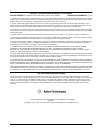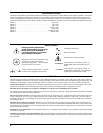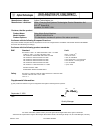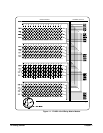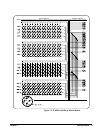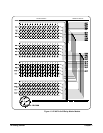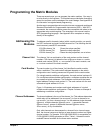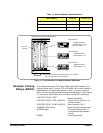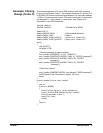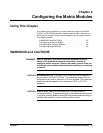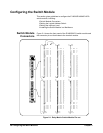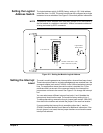
Getting Started 15Chapter 1
Programming the Matrix Modules
There are several ways you can program the matrix modules. One way is
to write directly to the registers. This method can provide better throughput
speed, but requires more knowledge of the matrix design. See Appendix B
for information on register-based programming.
Another way to program the matrix module is to use a command module and
Standard Commands for Programmable Instruments (SCPI). With SCPI
commands, the command module parses the commands and writes to the
appropriate relay module register. The examples in this manual use the
SCPI programming language. See Appendix B for examples on writing
directly to the registers.
Addressing the
Modules
To address specific channels (relays) within a matrix module, you specify
the SCPI command and matrix module channel list. The following are the
most commonly used SCPI commands:
• CLOSe channel_list Closes the relays specified
• OPEN channel_list Opens the relays specified
• SCAN channel_list Closes the relays specified, one at a time
Channel List The channel_list is a combination of the card number and the channel
numbers. The channel_list takes the form of @ssrrcc where ss = matrix
module card number (00-99), rr = row number of the matrix module, and
cc = column number of the matrix module.
Card Number The card number (ss of the channel_list) identifies the switch module
within a switchbox. The card number assigned depends on the switch
configuration used. Leading zeroes can be ignored for the card number.
For a single-module switchbox configuration, the card number is always 01.
For a multiple-module switchbox configuration, multiplexer modules are set
to successive logical addresses. The multiplexer module with the lowest
logical address is always card number 01. The card number with the next
successive logical address is 02, etc.
Figure 1-4 illustrates card numbers and logical addresses of a typical
multiple-module switchbox configuration. Chapter 2 shows an example of
addressing a switchbox configuration.
Channel Addresses The channel address is the rrcc of the channel_list. This address determines
which relay will be addressed. Use a comma (,) to form a channe list or
use a colon (:) to form a channel range. You can address single channels
(@ssrrcc), multiple channels (@ssrrcc,ssrrcc,...), sequential channels
(@ssrrcc:ssrrcc), groups of sequential channels (@ssrrcc:ssrrcc,
ssrrcc:ssrrcc), or any combination.
Only valid channels can be accessed in a channel list or channel range.
Also, the channel range must be from a lower channel number to a higher
channel number. For example, CLOS (@10000:20303) is acceptable, but
CLOS (@20303:10000) generates an error. Table 1-1 shows the matrix
modules channel numbers for the three matrix modules.



